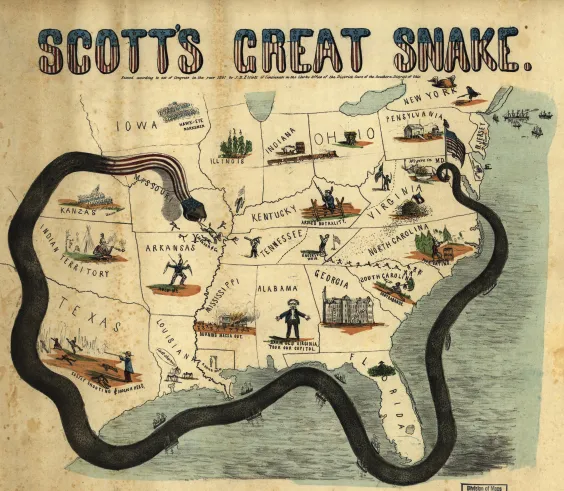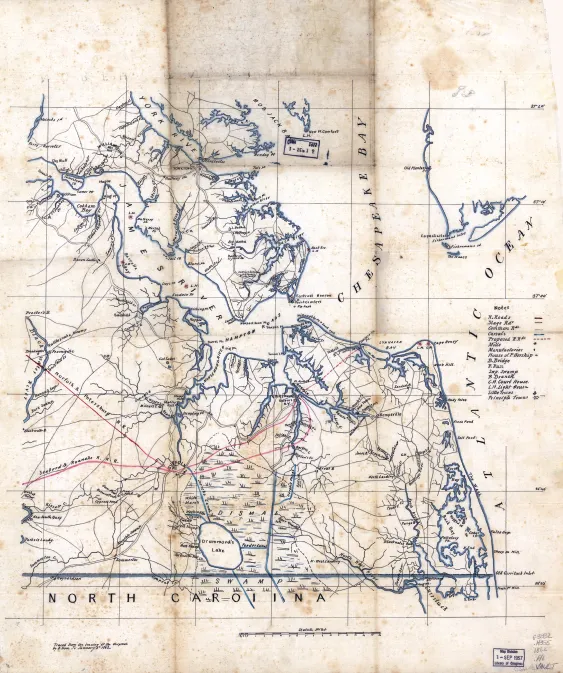![]()
PART ONE
The Monitor in
History and Memory
![]()
The Origins of the CSS Virginia
On December 20, 1860, just six weeks after the election of Abraham Lincoln, South Carolina voted to secede from the Union. In Charleston the secession convention issued the following ordinance, which read in part: “We, the people of the State of South Carolina, in convention assembled, do declare and ordain … that the union now subsisting between South Carolina and other States, under the name of the ‘United States of America,’ is hereby dissolved.”1 South Carolina was the first of the states to leave the Union, and it would lobby other southern states to secede. By the time of Lincoln’s inauguration on March 4, 1861, Mississippi, Florida, Alabama, Georgia, Louisiana, and Texas had followed suit.
Early on the morning of April 12, 1861, Confederate general Pierre Gustave Toutant Beauregard ordered the bombardment of Union-held Fort Sumter in Charleston Harbor. Sixty-eight men, under the command of Major Robert Anderson, held the fort for thirty-four hours before eventually surrendering in the face of a hopeless situation. One observer wrote: “All the pent-up hatred of the past months and years is voiced in the thunder of these cannon.”2 With these shots, the American Civil War—the bloodiest, most divisive conflict the country has ever known—was truly under way.
On April 15, 1861, President Lincoln called for 75,000 volunteers from loyal citizens to put down the rebellion. Originally called to serve for only ninety days, these men and boys poured into Union town centers throughout the spring and summer of 1861, their uniform buttons polished and their bands merrily playing—fired with patriotic enthusiasm.3
Virginians were split, politically and ideologically, over the issue of secession. But when Lincoln called for volunteers to fight their southern brethren, many in Virginia felt they had to take a stand. On April 17, 1861, Virginia seceded, soon to be followed by Arkansas, North Carolina, and Tennessee. Virginia governor John Letcher wrote to U.S. Secretary of War Simon Cameron, “I have only to say that the militia of Virginia will not be furnished to the powers at Washington.… You have chosen to inaugurate civil war, and having done so, we will meet it in a spirit as determined as the Administration has exhibited toward the South.”4 With the loss of Virginia, the fight for control of Hampton Roads began in earnest.
Fig. 1. Scott’s Great Snake. Union general Winfield Scott’s “Anaconda Plan” sought to strangle the Confederacy. (Library of Congress)
Union war strategists knew that the Confederacy would have to rely on continual, steady trade with Europe in order to acquire the manufactured goods needed to conduct a modern war. Looking to cut off such trade, Lincoln issued a proclamation on April 19 “to set on foot a blockade of the ports” of South Carolina, Georgia, Alabama, Florida, Mississippi, Louisiana, and Texas—all states that had joined the Confederacy. The blockade of Virginia and North Carolina followed on April 27.5
The central, burning question for Lincoln was how to restore the Union. His general in chief, Winfield Scott, realized that the Union would have to attack and invade the South, and that therefore the Confederates would be fighting close to home and close to their sources of supply. Scott needed time to expand his tiny regular army to attack, but above all he needed to cut off the Confederate supply lines. Scott proposed to put the squeeze on the South by enforcing a naval blockade that stretched over 3,500 miles of coast from Virginia to Mexico and up the Mississippi from New Orleans to New Madrid Bend. This so-called Anaconda Plan could only succeed over time: the South would not starve overnight, so patience was an essential part of Scott’s strategy. While the South suffocated, he reasoned, the Union army would attack and triumph.
The State of the Navy in 1861
On March 7, 1861, Abraham Lincoln appointed Gideon Welles to be secretary of the navy. Welles, however, was not a naval man as such, though he had been chief of the navy’s Bureau of Provisions and Clothing from 1846 until his attention turned to his (failed) campaign for the Senate in 1850. In fact, Lincoln was far more interested in Welles for his politics than his webbed feet. The son of a shipping merchant, Welles was a lawyer, a journalist, and a politician. Also, as a newly minted Republican, Welles had avidly supported Lincoln’s nomination at the 1860 Republican Convention in Chicago, though it may have been as much to keep William H. Seward from the nomination as it was to secure it for Lincoln. Welles, like many former Democrats, had been opposed to Seward on the grounds that Seward stood for wasteful government spending, an “imperial” federal government, and was an advocate for stronger ties to Great Britain. Lincoln, nonetheless, appointed his onetime rival Seward as his new secretary of state. Welles, Lincoln reasoned, would provide a good balance to the Whiggish notions of Seward and others within his cabinet. Also of importance, Lincoln specifically wanted “a man of democratic antecedents from New England.”6 Welles became a favorite with political cartoonists and was dubbed the “Rip Van Winkle of the Navy Department,” in part because of his enormous white beard but also for his secrecy and avoidance of the press.7 In contrast, Welles’s assistant secretary, Gustavus Vasa Fox, appointed to that post in August 1861, had a great deal of naval experience. Fox had served in the navy, passing as midshipman in 1838. He had also spent time as part of the U.S. Coastal Survey (the organization that would later become a primary component of the National Oceanic and Atmospheric Administration, or NOAA).8
The navy these men inherited in 1861 was not exceptional, but neither was it moribund. Younger officers, though unable to advance as rapidly through the ranks because of the tenure system, were not bound so much by naval custom as were their elders. They would be the generation to accept the new technologies in ways the older officers, who had spent their entire careers on wooden sailing vessels, could not. In addition, the Naval Academy had been established in 1850 at Annapolis expressly for the training of new naval officers. So at mid-century American naval officers were well trained—and spent the majority of their time on exploratory or diplomatic missions.
By 1861 the U.S. Navy had ninety ships, but only fifty-two were considered serviceable. Of those, only four were in northern waters where they could be easily deployed against the rebellion. Four vessels were in Pensacola, Florida, and one was in the Great Lakes. Twenty-four vessels were spread out around the world, in the Mediterranean, the Pacific, off the coast of Africa and Brazil, and in the Caribbean. The rest were laid up “in ordinary,” which meant that they were undergoing repairs of some sort or were simply mothballed.9 Furthermore, this was a deepwater navy, ill suited to coastal and harbor engagements, which would be precisely what they would encounter during the war to come.
In the Confederacy there effectively was no navy. There was, however, a secretary of the navy, for President Jefferson Davis had appointed former Florida senator Stephen Russell Mallory to that post in February 1861. In the 1850s Mallory had been the chairman of the U.S. Senate Naval Affairs Committee and an active backer of naval reform. Mallory was a visionary and had followed the developments in the Crimea closely. Shortly after his appointment, he wrote that the Union “has built a navy; we have a navy to build.”10 This new navy would need to be composed of “a class of vessels hitherto unknown to naval service,” combining steam power, devastating ordnance, and iron sides if it was to be effective.11
The Confederacy also had a large pool of naval officers from which to draw. Nearly three hundred officers had resigned their commissions and “gone south.” Unfortunately, they had few crew members to command. Most career sailors hailed from the North, and the Confederacy’s problems were compounded by the fact that for some time now the South had relied almost exclusively on northern ships to carry cargo.
The South also had no large vessels. What did exist, however, was a large number of coastal and riverine craft. The only private shipyard in the Confederacy was in New Orleans. The other two were federally controlled—Gosport Navy Yard in Portsmouth, Virginia, and Pensacola Navy Yard in Florida. There were no major foundries save one, the Tredegar Ironworks in Richmond, Virginia.
The South had rail transport, but only ten ports had rail connections to the interior, and of these only six had interstate rail. All but Norfolk had shallow waters, thus keeping larger vessels from entering directly. The infrastructure of the roads system in the Confederacy was also substandard, with very few paved roads. Even the Confederacy’s population was lacking in comparison to the North: there were 9 million people in the Confederacy, but 3.5 million were enslaved. The Union had a population of roughly 23 million, the vast majority of whom were free. Even though barred from active service in the Union army until 1863, blacks were able to serve in the Union navy, though limited initially, at the outbreak of the war, to the lowest pay rating of “boy.”12 Both the Union and the Confederacy desired control of the deepwater harbor of Hampton Roads. For the Union, it offered access to the southern Atlantic coast—a target of Scott’s Anaconda Plan. In addition, rivers running into the Roads offered direct links to crucial Confederate sites: the Elizabeth River provided an avenue to Gosport Navy Yard, and the James River led directly to the Confederate capital city of Richmond. For the Confederates, control of Hampton Roads meant direct access to the Union capital of Washington, D.C., and to Baltimore, an important industrial and shipping center within the Union.
Fig. 2. This ca. 1862 map features the southeastern part of Virginia from the Chesapeake Bay and York River to the Blackwater River. (Library of Congress)
Gideon Welles understood that Gosport Navy Yard would be a tempting target for pro-secession Virginians. Therefore, Welles ordered Flag Officer Garrett J. Pendergrast, commander of the USS Cumberland, to keep his ship in Gosport “and, in case of invasion, insurrection, or violence of any kind, to suppress it, repelling assault by force.” At the same time, however, Welles ordered the navy yard’s commander, Charles Stewart McCauley, to remove all public property from Gosport—in this case, any of the warships “in ordinary” there that were laid up in the dockyard with their ordnance, masts, sails, and rigging removed and the upper deck roofed over to protect the interior spaces. At Go...


